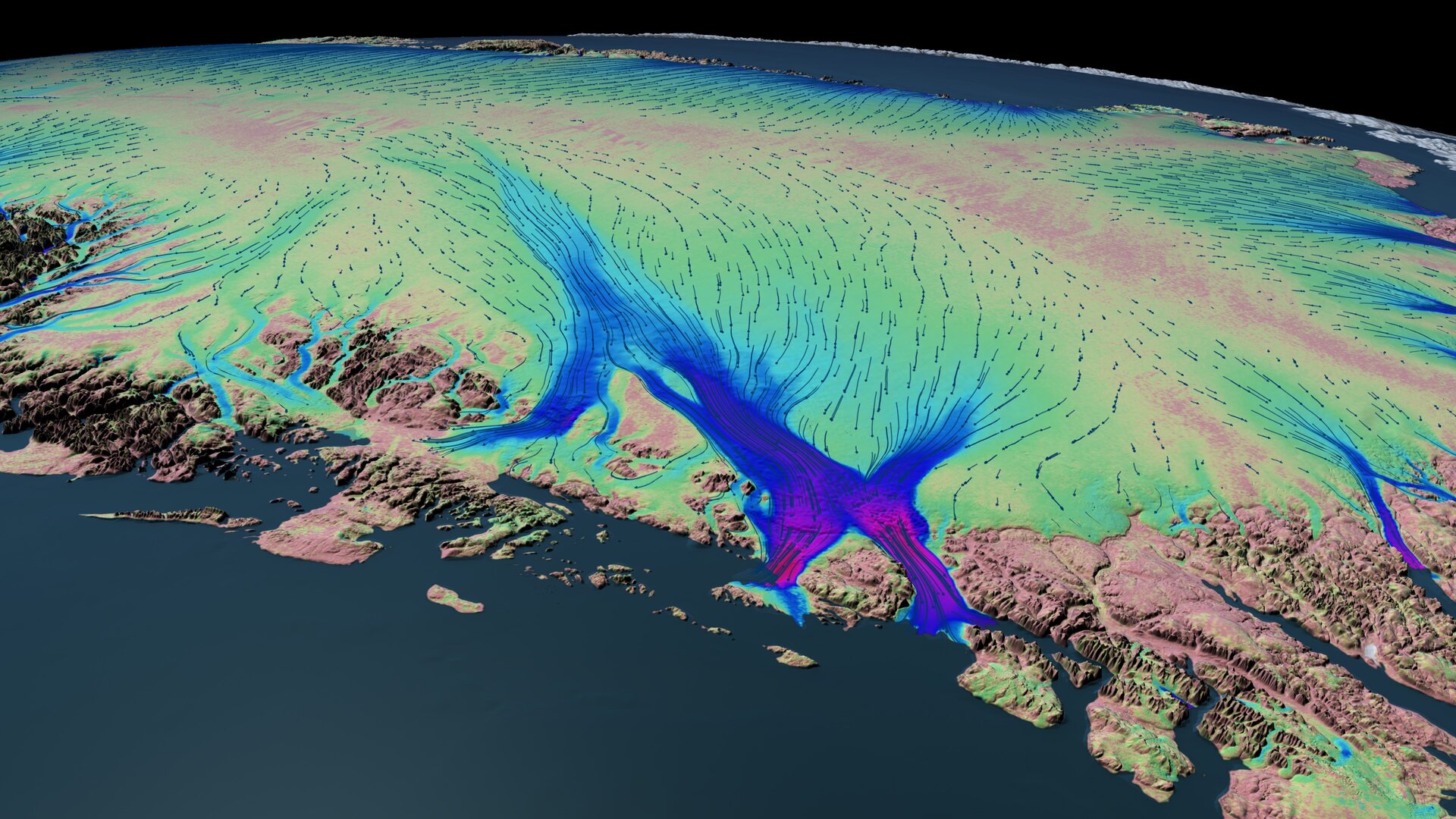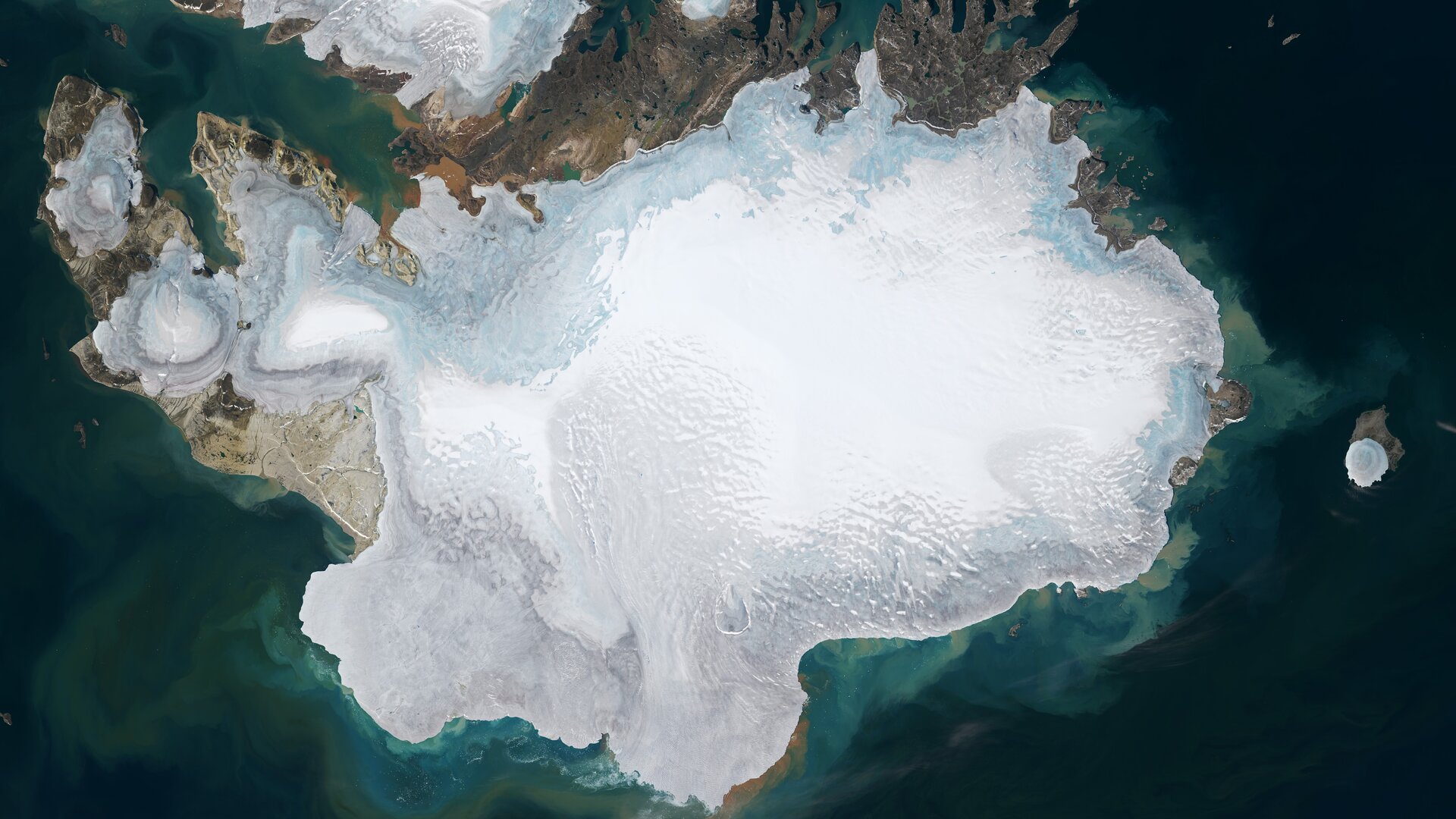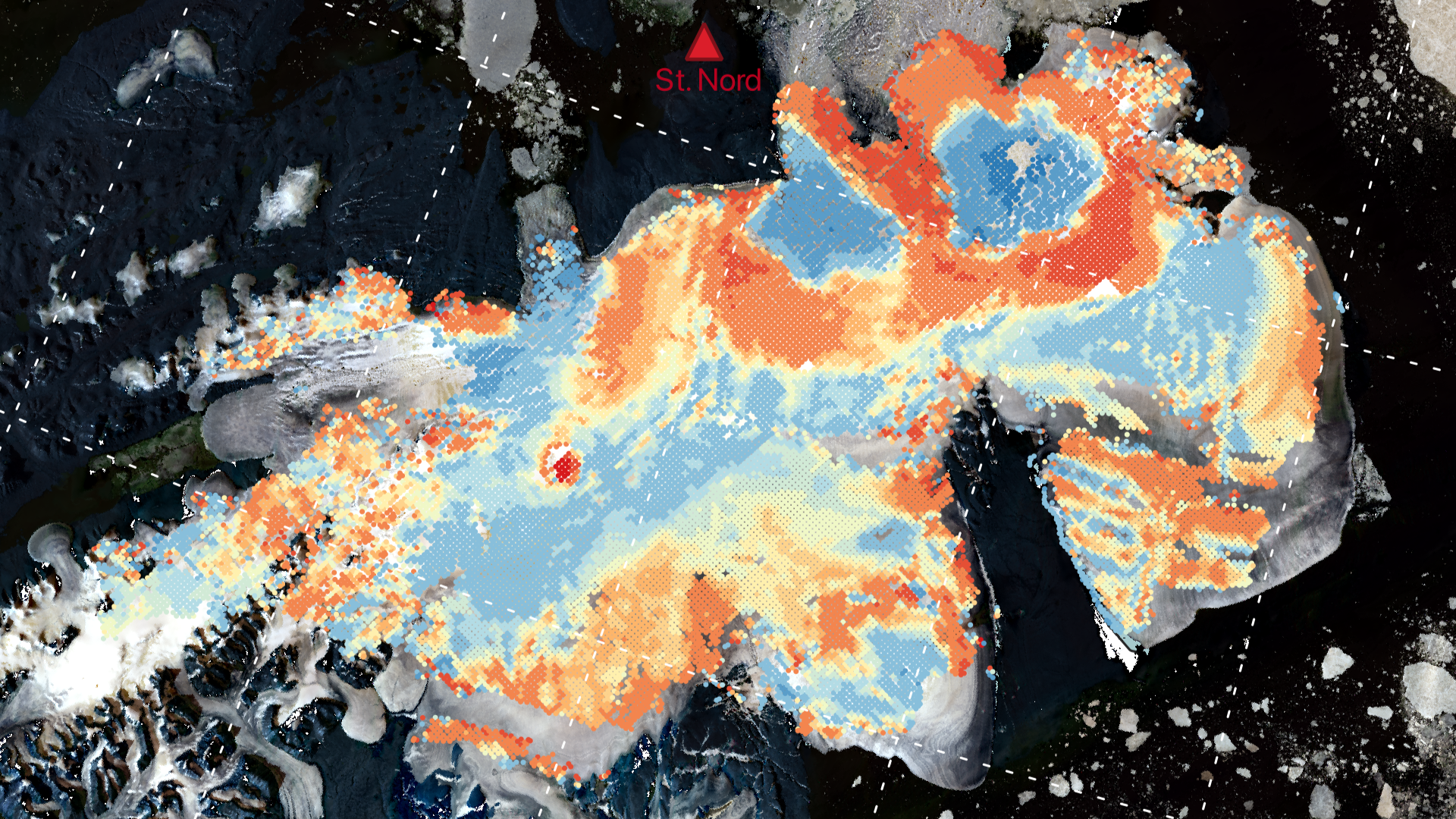Bringing together the remote sensing communities of land ice and sea ice
ARCTEX will, in a coordinated manner, bring together the EO-communities of land ice and sea ice to co-develop datasets targeted at the complex interactions occurring during extreme events at the interfaces of these domains to better understand their implications for the global climate dynamics. Within ARCTEX, we will integrate data, expertise, and methodologies from across these disciplines to produce much-needed data to support a comprehensive view of the complex interactions occurring between land and sea ice and develop effective strategies for addressing the grand challenges posed by climate change in polar regions.
Exploiting and expanding on the current EO-data portfolio
While time series have been created for existing essential climate variables, the temporal sampling of such climate data records is suboptimal for studying climate extremes occurring over short time scales and the inter-connected impacts related to these. A typical temporal sampling of the climate data records is annual or in the best case, monthly. Hence, existing datasets are not adequate for studying rapidly evolving extreme events taking place in a matter of weeks or even days. To accurately document changes associated with any extreme event, and in particular, to attribute cause and effect between different parameters, it is necessary to develop bespoke datasets to capture this shorter-term variability and their covariances. As the Arctic is vast, we concentrate our analysis on three science cases:









